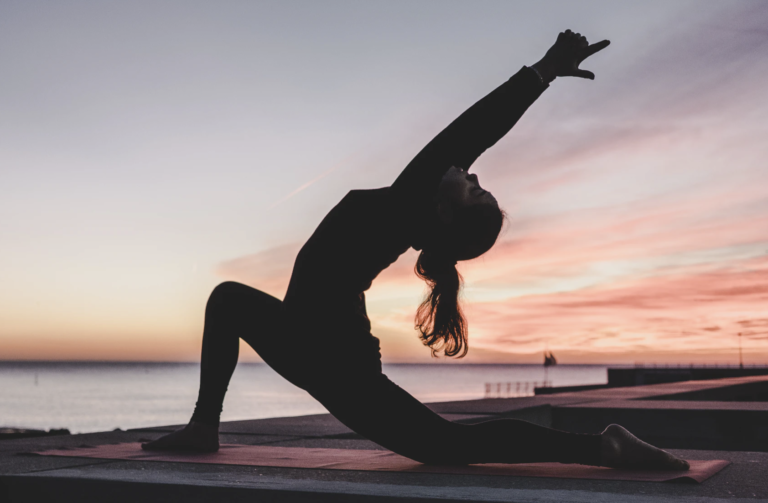はじめに
今回は健康のジャンルで目についたヨガをテーマにした動画を視聴してみた。
(出典:YouTube)
ヨガとは
ヨガとは古代インドで生まれた身体的、精神的、霊的な修行で心を静める。ヨガの究極の目標はサマディの達成だという。
サマディ(三昧)とは
サマディは三昧(さんまい)ともいう。マグロ三昧やイカ三昧の三昧だ。ヨガの経典であるヨガ・スートラでは、有想(うそう)三昧と無想(むそう)三昧、有種子(うしゅし)三昧と無種子(むしゅし)三昧などが説かれている。ヨガは今から4,500年前に遡ったインドと言われているが、スートラの起源は謎のようだ。
ヨガ大国はアメリカ
日本のヨガ人口は2013年には100万人をこえて、さらに増加しているが、認定されたヨガインストラクター(RYT200)は日本の約千人に対して、アメリカでは約4.7万人と桁違いに多い。RYT200は約200時間のトレーニングを受けたインストラクターであり、さらに300時間のプログラムを受講したインストラクターがRYT500となる。

(出典:全米ヨガアライアンス協会HP(2017年10月現在))
8つの質問
ヨガを調べ始めると色々発散しそうなので、TED-Edを視聴した後の8つの質問をレビューしてみたい。
Q1) Research on yoga and health is evolving… What studies do you think should be done to further the field?
ヨガと健康に関する研究は進んでいるが、さらに発展させるためにはどのような研究が必要と思おうかという意見を問う設問だった。ヨガには、身体的なポーズ、呼吸法、精神的な瞑想という3つの核となる要素があり、どの要素も重要なので、この3つをもっと研究されるべきだと思った。英語では次のような感じか。
Q2) Of the various claims associated with yoga, where do you think the evidence is currently the strongest?
ヨガに関連する主張において、最も根拠が強いと思われるのはどれかという質問だった。最も強力な証拠は、ヨガがストレスの症状を軽減するのに役立つということかと思った。あまり自信がない。
Q3) Do you think yoga is superior to other forms of exercise in terms of its health benefits or similar to running, swimming, cycling, etc?
ヨガは健康に効果があるが、ランニング、水泳、サイクリングなどの他のスポーツと比べてとどう思うかという設問だった。ヨガは、他のスポーツ、ランニング、水泳、サイクリングなどと比べて、精神的な効果と肉体的な効果を併せ持つ点で優れていると思う。英語では次のような感じか。
Q4) The origins of Yoga can be traced back to which ancient scholar?
ヨガの起源についての質問だ。答えはパタニンジャーリ(Patanjali)だ。動画の最初に「紀元1世紀から5世紀にかけて、ヒンズー教の聖者パタンジャリは、インドで古くから行われていた瞑想の伝統を体系化し始めました。」とあり、これが古典的なヨガのテキストであるヨガ・スートラだ。
Q5) The core elements of traditional yogic practice include all of the following except which one?
伝統的なヨギーの実践のコアとなる3つ要素は、身体的なポーズ(Physical postures)、精神的な黙想(Spiritual contemplation)、
呼吸法(Breathing exercises)であるため、これに含まれないのは、薬草の煎じ薬(Herbal infusions)だ。
Q6) Research into yoga is limited by which of the following?
ヨガに関する研究を制限するものは何かという設問だ。サンプル数が少ないこと(Small sample sizes)、多様性の欠如(Lack of diversity)、自己申告に依存すること(Reliance on self-reporting)は全て該当するので、これら全てが正解となる。
Q7) With regard to lung disease, yoga may have therapeutic benefits in all of the following except which one?
肺の病気に関して、ヨガは次のうちどれを除いて治療効果があるかという設問だ。病気の言葉は難解だけど、慢性気管支炎(Chronic bronchitis)や気管支喘息(Asthma)、肺気腫(Emphysema)は治療効果があるので、治療効果がないのは、急性肺水腫(Acute pulmonary edema)となる。動画の中では、さらに「既存の運動習慣にヨガを加えることで、慢性腰痛(Chronic back pain)、関節リウマチ(rheumatoid arthritis)、骨粗しょう症(osteoporosis)などの治療が困難な症状の筋力や柔軟性を向上させることができます。」と解説していた。
Q8) Which of the following statements about yoga is NOT true?
ヨガに関する次の記述のうち、誤っているものはどれかという設問。ヨーガ・スートラと呼ばれる書物に、その修行法が記されている、ヨガは体力と柔軟性を向上させる、ヨガでストレスを軽減することができるは正しい。動画の中で「将来的には、心臓発作や癌の発生率、認知機能などに対するヨガの影響を測定できるような、多様な参加者を取り入れたより大規模な研究が必要でしょう。」という表現はあるけど、特定の癌の再発を防ぐ(Yoga prevents certain cancers from recurring)は言い過ぎかと。
まとめ
ヨガの動画は結構難解だった。なぜ難解かといえば、臓器や病気の英語がさっぱり分からない。リウマチをrheumatoidというのも初めて知った。関節に炎症が起こり、特に女性で関節の腫れや痛みを感じる人も多い。大事なことは動画のポイントを理解することだけど、これがなかなか難しい。
以上
最後まで読んで頂きありがとうございました。
拝
参考:英文スクリプト
At some point between the 1st and 5th centuries CE, the Hindu sage Patanjali began to codify the ancient, meditative traditions practiced throughout India. He recorded techniques nearly as old as the Indian civilization itself in 196 manuals called the Yoga Sutras. These texts defined oga as the Yoking or restraining of the mind from focusing on external objects in efforts to reach a state of pure consciousness.
Over time, yoga came to incorporate physical elements from gymnastics and wrestling. Today, there is a multitude of approaches to modern yoga – though most still maintain the three core elements of Patanjali’s practice: physical postures, breathing exercises, and spiritual contemplation. This blend of physical and mental exercise is widely believed to have a unique set of health advantages. Such as improving strength and flexibility, boosting heart and lung function, and enhancing psychological well-being. But what has contemporary studies shown regarding the benefits of this ancient tradition?
Despite attempts by many researchers, it’s tough to make specific claims about yoga’s advantages. Its unique combination of activities makes it difficult to determine which component is producing a specific health benefit. Additionally, yoga studies are often made up of small sample sizes that lack diversity, and the heavy reliance on self-reporting makes results subjective. However, there are some health benefits that have more robust scientific support than others.
Let’s start with flexibility and strength. Twisting your body into yoga’s physical postures stretches multiple muscle groups. In the short term, stretching can change the water content of these muscles, ligaments(靭帯), and tendons(腱) to make them more elastic(伸縮性). Over time, regular stretching stimulates stem cells which differentiate into new muscle tissue and other cells that generate elastic collagen. Frequent stretching also reduces the body’s natural reflex to constrict muscles, improving your pain tolerance for feats of flexibility. Researchers have not found that any one form of Yoga improves flexibility more than another, so the impact of specific postures is unclear. But like other low-impact exercises, Yoga reliably improves fitness and flexibility in healthy populations.
The practice has also been shown to be a potentially powerful therapeutic tool. In studies involving patients with a variety of musculo-skeletal disorders, Yoga was more helpful at reducing pain and improving mobility than other forms of low-impact exercise. Adding yoga to an existing exercise routine an improve strength and flexibility for hard-to-treat conditions like chronic lower back pain, rheumatoid arthritis, and osteoporosis.
Yoga’s mix of physical exercise and regimented breathing has proven similarly therapeutic for lung health. Lung diseases like chronic bronchitis, emphysema, and asthma shrink the passageways that carry oxygen while weakening the membrane that brings oxygen into the blood. But breathing exercises like those found in yoga relax the muscles constricting those passageways and improve oxygen diffusion. Increasing the blood’s oxygen content is especially helpful for those with weak heart muscles who have difficulty pumping enough oxygen throughout the body. And for those with healthy hearts, this practice can lower blood pressure and reduce risk factors for cardiovascular(心臓血管系疾患) disease.
Yoga’s most widely celebrated benefit may be the most difficult to prove; its psychological effects. Despite the longstanding association between yoga and psychological wellbeing, there is little conclusive evidence on how the practice affects mental health. One of the biggest claims is that yoga improves symptoms of depression and anxiety disorders. Since a diagnosis of these conditions varies widely as do their origin and severity, it is difficult to quantify yoga’s impact. However, there is evidence to suggest that yoga can help reduce the symptoms of stress, as well as meditation or relaxation. Research on the effects of yoga is still evolving. In the future, we will need larger studies, incorporating diverse participants, which can measure yoga’s impact on heart attacks, cancer rates, cognitive function, and more. But for now, yoga can continue its ancient tradition as a way to exercise, reflect, and relax.




